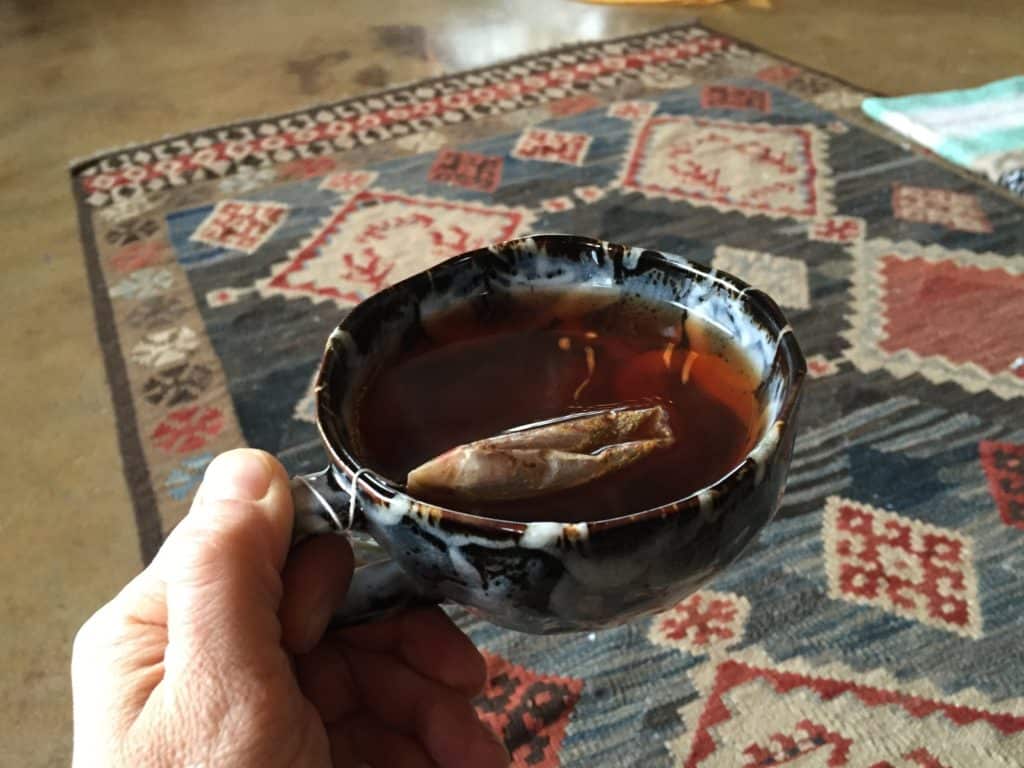Radical Wellbeing: Integrative Medicines, Holistic Health, and Alternative Awareness is a monthly column exploring the broad spectrum of healing practices and organizations, body and spirit sciences, and wellbeing tools that are rooted in personal, community, and ecological awareness and are available locally.
As a student of Yoga, I have known about Ayurveda — the approach to health and well-being indigenous to India — since I first started to learn about holistic and alternative health perspectives 25 years ago. One of the oldest known integrative medicine systems, practiced as far back as 5,000 years by the ancient risis (seers of the Vedic tradition), it bridges science and philosophy to support a physical, psychological and spiritual integration. It is a lifestyle promoting vibrant well-being with an emphasis on self-healing.
Tizia and Paul O’Connor are the founders of Auromesa, a traditional Ayurvedic healing retreat center in Taos. They live and work out of a sun-powered earthship with a hogan for their week-long panchakarma (a physical, emotional and psychological cleansing for better health and vitality) and weekend clients. They grow organic food and herbs in gardens for the retreat center.
Tizia is an Ayurvedic practitioner who studied in India and returns every year for ongoing study, and Paul is Auromesa’s administrator, as well as an off-grid enthusiast and published artist. According to Tizia, “[Ayurveda’s] concepts about health and disease promote the use of herbal compounds, appropriate diet, panchakarma (seasonal detox), Yoga, and meditation to restore the balance of our delicate system made of five elements, namely ether, air, fire, water and earth.”
The risis uncovered the science of Ayurveda through deep meditation and direct experience of reality via discipline and ritual. Their understanding of the nature of the universe is outlined in the classical philosophy of Samkhya, which is also a significant philosophical influencer of the foundation of Yoga practice.
In Samkhya, the gunas describe how universal energy manifests —as essence, movement, and inertia. The gunas are pictured as three bands of rope coiled around each other in a fluctuating state of equilibrium. Essentially, Ayurveda is concerned with how these qualities of the energy in the universe translate on the human scale with the purpose of striking a balance for optimal health and lifestyle.
By understanding the qualities of our own physical, psychological and emotional construct and what brings them either into or out of balance, according to this ancient healing system, we can begin to utilize food and its nourishment as medicine in our own self-healing. The object is not to denounce the gifts and extraordinary benefits of allopathic medicine but to practice a more comprehensive way of living that promotes health and can help reduce our visits for the more serious stuff, especially when practiced over time.
Taken as a whole, including complementary practices like Yoga and meditation, Ayurveda will address not only physical but also mental and emotional health. Although at this time most Western doctors will encourage us to eat well and exercise, Ayurveda encourages us to take possession of our health in an even more empowering and integrated way. By considering all the parts that make up the whole it draws our attention to observing ourselves more completely, a concept that is at the center of Samkhya and Yoga philosophies.
Our whole constitution is broken down into three components, or doshas — kapha, pitta, and vata — the qualities of our individual physical and psychological make-up that are derived from the five elements. When these elements fall out of balance, they can promote illness and impede harmony in our way-of-life. Our environment and the seasons also have dosha, and so when treating our ailments Ayurveda also considers where we live and the time of year. It looks at the mind, body, and environment in relationship as intrinsic to what life is.
Tips for Staying Healthy During the Winter Months
I asked Tizia for some tools on how to improve our health during the winter months, and whether our unusually warm year makes a difference regarding how we view things. She said that a warmer winter still has the quality of the season and should be treated the same. Here is the rest of Tizia’s advice for the season:
Winter is a kapha season with strong vata undertones characterized by cold weather, a sense of heaviness, increased moisture (rain or snow), cloud-covered days, and the grounded, slow feeling that sends many animals into hibernation … However, with our climate exceptionally cold and dry, or if you tend to feel more isolated during the winter months, vata will also be a strong component of your winter season, and you will want to actively keep vata pacified as well.
A supportive winter diet will be aimed at pacifying kapha without increasing vata or vice versa. The body requires more fuel to stay warm and healthy in the winter months, and the cold weather forces the fire principle deep into the core of the body — igniting the digestive capacity. Our bodies therefore crave a more substantial, nutritive diet at this time of year, and you will likely find yourself eating larger quantities of food.
Focus on eating warm, cooked, slightly oily, well-spiced foods, avoid cold or chilled drinks, favor warm and hot beverages. Hearty, heating vegetables like radishes, cooked spinach, onions, carrots, and other root vegetables are generally well received this time of year, as are hot spices like garlic, ginger, black pepper, cayenne, and chili peppers.
And while dairy is best reduced in the winter months, a cup of hot, spiced milk with a pinch of turmeric or dried ginger and nutmeg before bed can help to encourage sound sleep and should not be overly congesting. It is best to reduce or avoid cold, damp foods, excessively sweet foods, overly heavy or oily foods, and frozen foods. You may also find that your body responds well to an occasional one-day water or juice fast if you are prone to kapha imbalances like colds, coughs, and sinus congestion.
To address the seasonal tendency toward melancholy and loneliness invite warmth into your mind, body, and relationships, and create frequent opportunities for fun and laughter. Try to avoid rushing. Instead, make a concerted effort to embrace a slower, more relaxed pace through the winter months. This is a great time to engage in meaningful relationships and to socialize, but balance your gregariousness with some quiet time, reflection, and stillness. After all, the slow, heavy qualities of the winter months offer a rare opportunity to retreat and check in with ourselves.
A great start with Ayurveda is to have a full consultation to know your own dosha, and begin to work with elements of food and nature that are easily accessible. With a consultation, you’ll also be given recommendations on what is best for you in terms of eating, practice, skin care and more. Consults with Tizia can be scheduled by going to auromesa.com.



